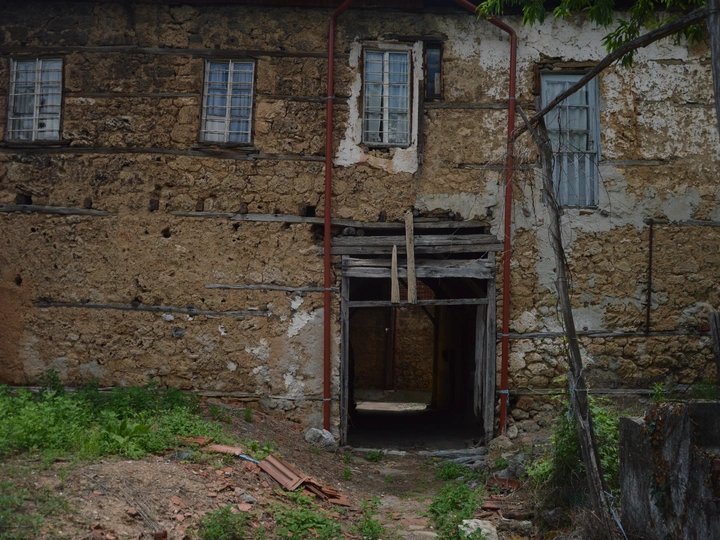Vacant to Vital: Commons-Based Rural Construction

Vasiliki Parharidou
Alexandra Radanovic
Nikolaos Vrantsis
Panagiota Vrantsis
We are an interdisciplinary collective rooted in rural Greece and committed to housing justice, sustainable construction methods, and commons-based spatial practice. Our team includes researchers, architects and community organizers who have been active in confronting housing precarity, rural decline and vacancy.
HARTA is a grassroots collective formed in Naousa, northern Greece. It emerged as a response to acute crises of housing precarity, migrant displacement, and rural abandonment. Our intervention was deeply rooted in place-based solidarity. We mobilized counter-mapping, fieldwork and occupations to expose how vacant properties and public agricultural lands were in fact the product of political inertia. We sought to reclaim them as terrains of social justice, community agency, and inclusive belonging.
We are researchers combined with precarious workers and local residents deeply embedded in the life of our municipality. Our interests span collective spatial inquiry, community mapping, housing activism and solidarity with refugees and marginalized residents.
So far we have conducted autonomous, block‑by‑block mapping of thousands of vacant homes in Naousa. This work challenged the political choices behind housing scarcity.
We have initiated public sit-ins and symbolic occupations of long-vacant buildings to make housing vacancy visible and press municipal authorities to act.
We have developed policy proposals for a publicly mandated body to renovate, socialise and redistribute vacant housing and land, beyond charity or market logic.
We have published our work as an open-access conversation contributing theory and praxis on housing deprivation and rural collective action.
Our work exemplifies how place‑based organizing, critical inquiry and spatial activism can overturn dominant narratives of vacancy, exclusion and rural irrelevance, and demonstrate housing as a common good, rooted in democratic control and shared material wealth.
Vacant to Vital: Commons-Based Rural Construction addresses the twin crises of rural abandonment and ecological degradation through collective building practices, local materials, and democratic control.
Rural regions across Europe face population decline, vacant housing, and the erosion of local knowledge. At the same time, mainstream construction remains dominated by steel, concrete, and speculative development that is unsustainable both socially and environmentally. This proposal envisions a different path, one aiming at reviving underused public housing stock and agricultural land through the sustainable use of local materials and collective labor.
We aim to identify and test the structural and thermal properties of overlooked materials, like earth, timber, stone, and components salvaged from derelict buildings, and reintroduce them into renovation and maintenance practices. Vacant public housing will be retrofitted or rebuilt according to community needs, as decided by neighborhood assemblies and local construction workers.
This is more than a technical fix. It is a political and cultural project through which we seek to reconnect land, labor, and knowledge in a commons-based model of rural development. Construction becomes a process of rebuilding not just homes, but social relations and ecological responsibility, beyond the logics of profit and privatization.
This proposal offers a replicable model for post-growth, community-led regeneration. As it evolves, it will form the basis for a practical toolkit that municipalities, cooperatives, and rural networks can adapt, merging spatial design, material reuse, and grassroots democratic planning to make rural life viable, desirable, and just.